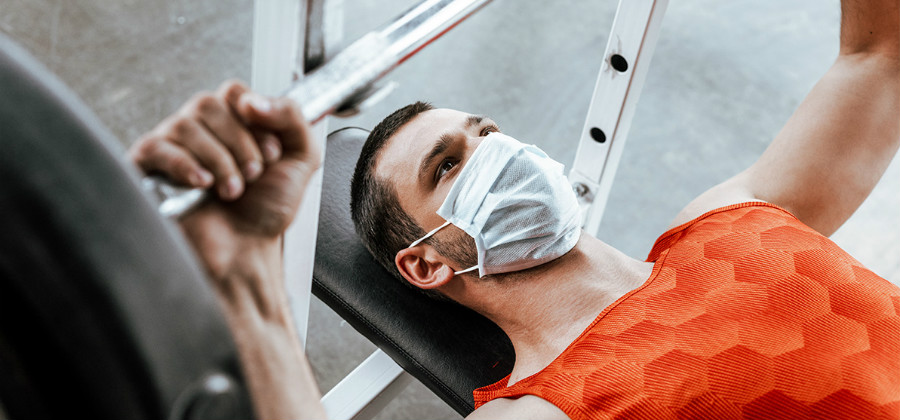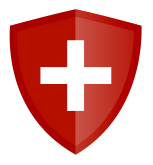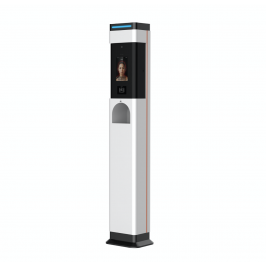10 COVID-19 Gym Safety Rules for Owners

As gyms begin to reopen their doors in accordance with government COVID-19 guidelines, there are many challenges they will face. For the past several months, people have been exercising inside their homes. Bedrooms and living rooms became yoga studios or even cycling spaces. And, now, when fitness centers are welcoming their members again, they may be subjected to a massive inflow of visitors. People are eager to return to their normal workouts, but many of them keep asking, “Are gyms safe enough to go there right now?”
Guidance For Gym Owners
Heavy breathing in confined areas spreads infectious droplets further and members share the same equipment. These factors pose a higher risk of catching or transmitting the virus in gyms. The need for effective safety measures has never been greater. By implementing new, updated gym policies and procedures, you’ll boost workers and members to get back to your fitness center. In this guidance, you’ll find recommendations based on the state directions for gym reopening. Use them to survive your fitness studio under such tough conditions.
Measure 1: Place Temperature Cameras
When you are reopening your gym, first and foremost you should focus on people’s health and safety. Venues that put every effort to protect people and create more secure conditions for them, win clients back. You should start by implementing temperature monitoring and symptoms examination in everyone who comes into the gym. According to the World Health Organization (WHO), fever is the most telling sign of Coronavirus disease. That’s why consistent temperature control is vital for preventing the spread of the virus.
Smart temperature scanners have become an efficient solution for businesses across the country. These devices ensure that no one with fever-like symptoms exposes other people inside the facility to the COVID-19. They’ll allow/disallow the entry based on peoples’ health conditions. The market is offering numerous options; however, the next items are the most convenient to use in fitness centers and gyms.
A smart access kiosk and/or smart sanitizing hub - both these devices are perfect for workers’ temperature checks. Also, they boast a built-in facial recognition algorithm, making them great for employee clock-ins. These scanners work fast so they will streamline the flow of people and prevent waiting lines. In addition to all the helpful features mentioned above, a smart sanitizing hub has a hand sanitizer dispenser, making it ideal for gyms and fitness centers.
Thermal security cameras - these devices are small, wall-mounted temperature cameras designed for high-traffic areas that can screen up to 30 people at once. This device will meet your needs if you want to provide both discreet surveillance and consistent temperature monitoring without disturbing your visitors.
All these devices are adjustable and easy to use; you’ll easily integrate them with your existing security system. They work quickly and accurately, avoiding waiting lines and incorrect readings. More importantly, the smart equipment catches core body temperature which is critical for determining if a person is feverish. The scanners can record and store data while maintaining user privacy. The system preserves the confidentiality of each person’s health status and history.
Measure 2: Provide Proper Conditions for Social Distancing
One of the most important requirements for gym reopening is providing proper conditions for social distancing. According to the Department of Health's guidance for health clubs/gyms/fitness centers, the occupancy of any indoor facilities must be reduced to 25% of the declared maximum roominess. Furthermore, if indoor group sessions take place, there must be no more than 1 individual per 200 square feet of the usable room. Lastly, each person must be able to maintain a 6-foot distance from others during the entire session.
Gym owners might need to rearrange equipment or even reduce the number of machines. They can move apart stationary bicycles, treadmills, and elliptical machines or remove them from service. You should also mark sections for floor exercise with paint or tape so that members can work out within specific areas. Display signage inside the gym that will remind people about the significance of social distancing.
Measure 3: Maintain Good Ventilation
Higher intensity workouts increase the risk of COVID-19 transmission. That’s why ventilation in gyms should be treated with careful attention. Ventilation must be optimized so that fresh air flows to all areas of the premises. It’s better to use equipment that permanently refreshes the air inside with filtered airflow from outside.
Before the gym reopening, the owner needs to examine and assess air conditioning, ventilation, and heating while ensuring the equipment operates according to their design specs. If there isn’t such a system in your fitness studio, create peak natural ventilation. Have doors and windows wide open where possible and utilize fans.
Measure 4: Ensure Regular and Thorough Cleaning
COVID-19 can be transmitted via high traffic surfaces, especially in an environment like gyms. Therefore, a rigorous cleaning regime in your fitness center is a must, although some machines and equipment are problematic to cleanse thoroughly due to their shape. It would be wise to instruct the cleaning staff and provide educational sessions before they start to perform their duties. Ensure all cleaners are well-informed on the gym safety rules and know how to wash properly to abolish the risk of the virus cross-contamination.
Here are vital CDC guidance for proper clean-up:
- Disposable gloves are a must for cleaners while they are cleaning.
- Furnishings must be cleaned with soapy water or appropriate cleansers and disinfectant several times a day.
- Frequently touched surfaces require disinfection before each use. Note that the fitness studio must be well-stocked with disinfectant solutions, bleach, wipes for sanitizing surfaces, and clean cloths that meet Environmental Protection Agency standards against coronavirus. The ordinary wet wipes are not suitable for thorough cleaning since they won’t remove most pathogens.
Measure 5: Optimize Class Schedule
There are peak times in every fitness center when lots of people come to work out. However, the need for more cleaning and social distancing, makes it crucial to eliminate peak times. You should allow only a fraction of members to your gym at once. Now it’s easier to change the sessions schedule because lots of people work from home. Therefore, it’s more likely that their workout routines have changed. So, encourage people to come at different times, explain why it’s important and create a timetable suitable for everyone.
Measure 6: Interact With Your Employees And Members
Consistent and efficient communication has always been a key to success, and it’s hyper-relevant in the Coronavirus era. You should plan an educational session prior to opening the facility. In the training, you’ll explain what to expect under such unprecedented circumstances, inform your employees about the situation in the community, discuss how to arrange the working process, and how to protect oneself and visitors.
Also, schedule regular meetings with the staff where you’ll provide emotional support for them. Next, post posters and reminders telling about the influence of social distancing, why and how to wash and sanitize hands, demonstrate cough and sneeze rules, and proper use of masks. Download and print out posters designed by the CDC, they are colorful and fun.
Guidance for employees
According to the state regulations, all business owners who want to reopen their facilities must create a Coronavirus response plan and distribute it among employees. So, the first step employees should take when they get back to work is to become familiar with all available documentation. Below, you’ll find the most essential requirements and gym safety tips for employees.
Measure 1: Check Your Body Temperature
All employees have to check their body temperatures before they start their working day. If a person develops a fever, he/she might be infected with COVID-19. Such a person can’t work and needs medical examination and virus-specific testing. However, a potentially ill individual may not notice the first symptoms of the disease since they’ll be mild. Actually, it’s a life-saving procedure under today’s hazardous circumstances. Employers must provide consistent temperature monitoring at entrances, checkpoints, and workplaces.
Measure 2: Stay At Home
If you notice you have COVID-19 symptoms which are similar to ordinary respiratory disease symptoms - fever, cough, sore throat, headache - inform your supervisor at work and do stay at home! You should also isolate if you’ve contacted an infected person, or if someone in your household is ill. Talk to your supervisor to find out what gym strategies are in such a case. Maybe you can perform your tasks from home, or have modified job responsibilities. Check this resource to learn more useful information and be assured that you return to work is safe for you and the people around you.
Measure 3: Wear Mask or Face Covering
Masks or face coverings prevent people who aren’t aware of having the virus from transmitting it to others. They also decrease the chances to catch the disease. Your employer must provide you with enough masks so that you can change them frequently.
However, you should be cautious while using masks or face coverings!
- Wash your hands before putting a mask on and taking it off.
- Don’t touch either your face or mask while wearing it.
- Wash your face covering after each use.
If you have any concerns about using a mask or face covering in the gym (e.g. medical conditions), discuss it with your employer.
Measure 4: Keep Good Hygiene And Maintain Social Distancing
Wash and sanitize your hands often with soap and water for 20 seconds - that’s the World Health Organization’s (WHO) recommendations. If you wash your hands frequently, you won’t need to put on gloves unless they are required to perform your tasks. Employers must provide proper conditions and breaks so that employees can keep good hygiene. But if there isn’t an opportunity to wash hands, sanitize them with an alcohol-based solution that contains at least 60% alcohol.
When washing hands is a must?
- After using the toilet
- Prior to eating food
- Prior to and after cooking
- After you cough, sneeze, and blow your nose
- Before work and work breaks and after them
- When you put on, remove, or touch a mask/cloth face covering
- Prior to training sessions and after them
- Before you touch shared exercise tools or other things and after that.
Never touch your face, nose, mouth, or eyes with dirty hands. The rules we have been taught since we were children have become necessary safety precautions. Social distancing is another key aspect that will protect you from Coronavirus cross-contamination. So, use protective screens, stay 6 feet away from other people, and follow workplace cues, e.g. floor marking.
Final thoughts
Lots of people are desperately waiting for gyms to reopen since there are so many physical and mental health advantages from workouts. But fitness center owners should face the fact that the hazardous situations will never be zero, and they must put every effort to reduce them. Let’s sum up what owners can do:
- Buy the best smart temperature monitoring systems
- Provide conditions for hands washing and sanitizing
- Provide enough masks for their employees
- Provide conditions for social distancing
These simple steps will help you mitigate risks and stop the spread of COVID-19 in your fitness studio.






